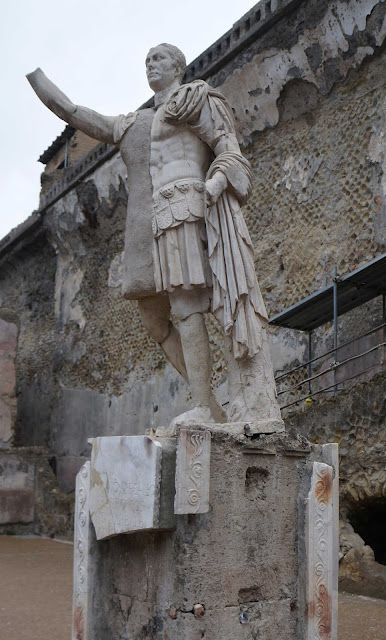Grabados-cápsulas + intervención artística
Pompeya y Herculano (Italia)
Incapsatus, 2018.
Engraved-capsules + artistic intervention
Pompey and Herculaneum (Italy)
El concepto del proyecto Incapsatus parte de la dualidad producida entre dos hechos: el acontecimiento histórico de la erupción del volcán Vesubio y la acción abrasiva del ácido sobre la plancha metálica (grabado calcográfico).
Estas dos semblanzas están representadas en la intervención artística, realizada durante el recorrido físico por las antiguas ciudades romanas Pompeya (Pompei) y Herculano (Ercolano), enterradas y selladas por la lava de la erupción del Vesubio en el año 79 d. de C.
Se entremezclan edificios de poder y decisión (columnas, suelos o rincones) con espacios vividos, lugares de intimidad... El recorrido nos permite -interpretando las huellas que pertenecen a lugares y a nuestra memoria- conocer y construir nuestra propia mirada, puesto que lo contemplamos siendo conscientes de lo que allí aconteció.
Paralelamente el grabado encuentra un camino propio. Cobra vida propia en la matriz sumergida en un baño de ácido nos ofrece alguna cosa que no existía antes. La intensidad creativa se filtra en el proceso de ejecución, que no es un proceso mecánico, no es una resolución, no es una afirmación, sino un proceso abierto en que el azar, la intuición, los accidentes que aparecen durante el mismo trabajo se mezclan e interaccionan.
Esta abrasión queda plasmada en los grabados-cápsulas, que igualmente están sellados como las ciudades de Pompeya y Herculano, que son depositarias de la historia y la memoria y crean una dialéctica historia-espacio-memoria.
Las imágenes del proyecto no pretenden describir ni situarnos solamente en las estancias, sino que buscan experimentar y retornar a ellas desde la evocación, ya que quedarán marcadas emotivamente en el recuerdo.
The concept of the project Incapsatus sets off from the duality produced between two events: the historic path of the eruption of the volcano Vesuvius and the abrasive action of acid on the metal sheet (hand etched).
These two incidences are represented in an artistic intervention, carried out while physically going through the ancient Roman cities of Pompeii and Herculaneum, buried and sealed by the lava from the eruption of Vesuvius in the year 79 AD.
Buildings of power and decision (columns, floors, corners) commingle with living spaces, places of intimacy. The trip allows us -- seeing the traces that pertain to locations and to our memory -- to meet and construct our own gaze, because we contemplate while being conscious of what occurred there before.
In parallel the etching itself finds its own path. It takes on a life of its own in the matrix submerged in a bath of acid, offers us something that did not exist before. The creative intensity is filtered in the process of execution, which is not a mechanical process, is not a resolution, is not an affirmation, but an open process in which fate, intuition, the accidents that appear during the same work commingle and interact.
This abrasion is captured in the etching-capsules, which also are sealed as the cities of Pompeii and Herculaneum, which are depositories of history and memory and create a history-space-memory dialectic.
The images of the project do not pretend to describe or situate us during the visits only, but rather seek to experience and return to them through evocation, which will remain imprinted emotively in recollection.





















